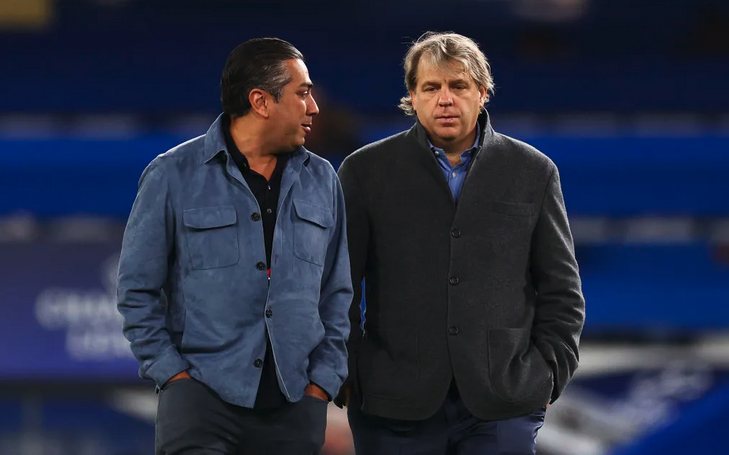
indian football
“Only Indian coaches know how players play in each region of the country, in say Goa or Kerala or the North East, the football is different, and only Indian coaches will be able to train and understand players from those regions,” says a coach I spoke to.
“Yes, but to compete internationally, we can’t keep doing what we’ve been doing here for decades, we need new impetus and ideas, a strategy and a blueprint and it has to happen right from the grassroots level,” I retorted.
“Foreign coaches won’t know how to train Indian players,” he replied.
“Well, to some extent your statement is valid, it can be different and new for them, but without foreign impetus, from countries where football is more developed and cultured, Indian kids can’t get on to the level of kids from Europe or South America or even other Asian countries.”
Whether it was close-mindedness or just him trying to assert the importance of Indian coaching, or maybe the fear that a flurry of foreign coaches would displace Indian ones, the problem at hand remains the same, how do we get India from the underbelly of FIFA rankings to a country that can compete on the same level as teams from other continents, specifically Europe and the UK?
Therein lies the problem, India is fixated on the old ways of doing things, the old systems, the bureaucracy, the outdated AIFF. India is the best if not one of the most dominant teams in cricket in the world, and we’ve been in the top 3 international teams relentlessly and consistently, but at football, we’re missing the plot completely.
Let’s weigh the pros and cons.
The money pumped into cricket is perhaps 10 to 20x times that of football; that’s problem number one, there’s not enough money being pumped into football, especially considering the past two decades.
However, that’s now slowly changing, as Nita Ambani, the wife of Indian billionaire Mukesh Ambani, is the founder and chairperson, of Football Sports Development Limited (FSDL) the company which runs the ISL and is trying to develop the sport at all levels in the country, and they are playing a key role in developing football in India.
The Ambani family, who own the primary parent company Reliance, have a net worth of nearly US$83.4 billion (as of 2023), so it’s great for the country and the sport that one of the richest families in the nation are taking an interest and making strides to improve the standard and level of the sport in India. And it will surely take that kind of backing for the country to reach the level of say Japan or even Morroco, the surprise package at the 2022 FIFA World Cup in Qatar.
The AIFF signed a 700-crore 15-year deal with FSDL in 2010. However, how much of that money was put back into the system to improve football standards in the country and how much was siphoned by top AIFF officials remains a mystery. The AIFF needs a total restructuring and revamp top to bottom, and replace the older generations with young and enterprising people who can actually propel Indian football to global success.
So that’s just the tip of the iceberg, the funds, that entail that there isn’t enough infrastructure at the grassroots and even pro level when it comes to stadiums and facilities and the abhorrent AIFF.
The popularity of the sport is another thing.
As per the Premier League’s official data as of 2021, 155 million Indians track teams and players over the year, thereby making it the most watched and supported international football league in the country.
A 2018 survey found that 45% of India’s population who live in cities are interested in football, which increased from 30% in 2013. Alternative figures show that around one in three Indian residents follow a football team or have favourite teams from global leagues and tournaments.
That pales in comparison to cricket in one of the most densely populated countries in the world. But it’s growing and evolving.
It’s one thing to bit** and moan about funds and underpaid coaches and staff, the infrastructure and the popularity of the game, these are the obvious reasons that Indian football is nowhere near global standards, but Indian football needs something more – A revolution.
So what is the blueprint and way forward for Indian football, here’s a list of how we can get there:
1. Get Foreign Coaches
It’s perhaps paramount that India sees an influx of foreign coaches to train youngsters at all levels. This need not be at the expense of sacking Indian coaches but rather in a cohesive and collaborative way, where top European or South American, British, or African coaches can work in tandem with Indian coaches in each region, i.e with coaches who know the local language and style of a particular region in India.
We need new & innovative methodologies and ideas from countries that are more developed in the sport and who have the best part of over a century of knowledge, expertise, and training and coaching methods, who have seen the evolution of the sport from its inception in the late 19th century. Everything from the basics of dribbling, passing, and shooting, to more advanced tactics and philosophies, and styles of play, India needs a kick in the a** and an influx of the best footballing minds at the grassroots level from around the world.
2. The Physical Aspect
Another huge, yet perhaps overlooked aspect of Indian football is the misconception that Indian kids and youngsters can compete physically with the likes of African or European players. Physicality is simply not in Indian genetics. While perhaps the Indian army and the jawans would contest otherwise, when it comes to football, our kids simply cannot compete physically with the likes of British, African or EU like German, or Scandinavian players. So in essence, you can’t knock it long to a target man, you can’t put a lot of aerial crosses into the box, you can’t expect a physical contest in midfield and you can’t expect to beat international teams at physicality, it’s just not going to happen.
We need to adapt and change our style of play to suit the genetics of Indian kids and youngsters. If you line up against an African or physically dominant team and try to beat them at their physical game, 9 times out of 10 you’re going to lose. A FIFA insider told us that FIFA sees more potential in Indian girls than Indian boys because Indian girls are stronger than a lot of foreign girls at each level of the sport. But that’s just genetics. We need to play to our strengths, not copy or try to replicate a style of play that doesn’t suit us.
3. Flair And The Spain Model
Indians love to do things with flair. Whether that’s dancing at weddings, or on the streets during Ganesh Chaturthi or celebrating Diwali or other Indian festivals with panache, Indians love the show and pizzazz. They call it jeitinho or “native cunning” in Brazil, and in India, it could be termed as jugaad, but one thing Indian kids have is flair. In Spain, the term is “Viveza criolla” or “the clever way”.
In cricket, Indian players are considered more skillful than their other global counterparts. A stylish, cut shot from Rahul Dravid on the back foot or a flick of the wrists from Sachin Tendulkar, we have that flair inherently in us. Spain is not as wild as Brazil when it comes to multitudes of players playing on the streets of the country, with a taped ball made of rags and dribbling in the tightest of spaces, but Spain has its own culture, style and charm.
In terms of European football, Spain has had its own evolution, Spanish players are perhaps more diminutive and skillful and are not as physical as other European countries in their style of play. From the early years of Basque football to La Furia and Pichichi, and Pentland’s bowler hat, Spain has seen its own development and history of football.
The midfield trio of Xavi, Iniesta & Busquets, and David Silva in the pockets, are far from the most physically competent players, but they had skill, work rate, and class and of course, they won the World Cup and the Euros. Apart from Busquets, the others were no taller than six feet in height and were nowhere near as well-built as other midfielders they faced in their era.
The entire Spanish and Catalonian model of the game is based on the strengths of their country’s players. More possession, more dribbling in tight spaces, more work rate and work ethic, more incisive and inventive passing (an honorable mention of Guti here), more pace, and lethal shooting, more drills on keeping the ball, more drills on off the ball movement, more drills on dribbling and finding space and pressing and moving. In this way, Spanish kids and their youth systems produce players that play to their strengths and their flair.
And in this Spanish model, is where India can learn and adapt and grow. In following Spanish tactics, Spanish philosophy, and the Spanish way approach to football, India can definitely take considerable strides forward. If India begins to play to their strengths and the inherent flair that Indian kids possess, we can model our game just like Spain, and be successful.
4. Technology & Data
Technology is changing the landscape of the game all over the world. With the advent of data and analytics, football clubs around the world are making more informed, crucial, and critical decisions to improve their gameplay, scouting, recruitment, and training. India has a wealth of engineers and data analysts, yet the sports data analytics sector is only nascent.
For Cricket, it’s substantially more developed and widely used, but when it comes to football, there’s a huge gap and void in the sector. However, with the right kind of backing and vision, Indian companies can begin to get to the heart of data and analytics and tweak everything from analysis of games to scouting and training, and nutrition and all the aspects of the sport that can leverage data to make better decisions. And we need this at all levels of the sport.
5. Global Exposure & Collaborations
Indian kids need exposure. You can’t just have Indian kids and youngsters playing each other throughout the season. To measure and develop and have a barometer for where India stands, we need more international tournaments, more worldwide clubs setting up academies in the country, and more international levels of expectation for Indian youth.
While some big club academies have begun to set up base in India, like Barcelona and Man United to name a few, because of the sheer population of the country, and of course that they see a lot of potential in the Indian subcontinent, we need to see more clubs from all over the world take an interest in India. And Indian clubs sending kids abroad, like Kenkre FC is currently doing in Mumbai. It will take more influx and impetus from what it is at now. But on the positive side, it’s slowly improving.
6. Get An Indian Player Or Manager Into The Big Five Leagues
As it stands, no Indian player has ever played in Europe’s top five leagues. But let us tell you one thing, that’s one thing Indian fans are screaming out for. Our own Heung-min Son. It’s certain to say that the day an Indian player plays in the Premier League or any of the big five European leagues, the masses, and throngs of football fans in India will support him/her with their heart and soul.
It’s the same for managers, while there’s only Robin Dutt, not born and raised in India, but of Indian descent, who has managed a club as prestigious as Bayer Leverkusen and others, India needs to see more managers also make the jump into the top tiers of European football. We need our idols. Indian kids need their idols. This is a very important goal to achieve.
7. Practice, Practice, Practice & Developing Indian Talent
Whether it’s keepy-uppy, or a rondo, we need to drill our kids and youngsters to dedicate themselves to relentless practice. Whether Thierry Henry said the quote, “Amateurs call it genius, masters call it practice”, or not, it’s the most valid statement there is. Indian kids can’t juggle the ball nearly as much or as well as kids from other countries. It’s a fact. There’s no way around it. You just have to drill the kids to keep at it and just juggle the ball for hours on end on an everyday basis; no shortcuts here. The coaches are one thing, but the kids and youngsters need to put in the hours and the time and just hack away at it. God-given gift is one thing but without practice, and perseverance, and a never-say-die attitude, Indian kids won’t be able to compete with kids from overseas and they need to put in the time, and the blood, sweat, and tears.
The other side of the coin is the mentality of Indian clubs of looking abroad to sign players to get ahead in the ISL and other leagues. This needs to categorically change. At the moment the ISL rule for signing foreign players is at a maximum of six, this needs to be cut down to three or four. We need to develop and nurture Indian talent. And we need to pay them more. Indian football players also need to be paid on par with Indian cricket players, but will that day ever come? That’s a glaring issue. But to be practical and not utopian, they should at least earn 40-50% of what cricket players earn. Brands and companies need to also look towards Indian football players for sponsorships and level the playing field with cricketers. There need to be more rules in place to nurture Indian talent & put Indian players in the spotlight.
8. The Indian Mentality
Of course, one could argue that this has now changed, say from earlier generations. But Indian parents, at all levels of the social strata, need to inculcate and support their kids to pursue sports as a full-time profession, especially football and not just cricket.
We’ve fallen behind because of the narrow mindedness which has perhaps seen us lose out on our very own Zidane or Ronaldo Nazario; kids from a generation that began the football evolution in the country who dreamed of emulating their heroes, but who were resigned to becoming engineers and doctors. This mustn’t happen again. And so the mentality of Indian parents needs a categorical change.
9. Local Support & Local Media Coverage
There’s a generation who have all been guilty of following their favorite Premier League teams and not even watching a single ISL match. We live and breathe and support the big six clubs with all our hearts but we haven’t watched a single ISL game. That’s just criminal. Indian football needs the fans to propel it and make it even more popular. If you’re from that generation, go visit that ISL game, buy a kit, watch it on TV, talk and tweet about it, and follow the ISL as well. Indian football needs its fans. While the younger generation is slowly and keenly following the ISL and Indian leagues, the scene is slowly but gradually improving. So go out there and support and follow Indian football.
Indian media companies also need to seriously look at promoting the sport, this includes regional and other Indian language media companies and newspapers. Football needs to be covered on par with cricket at every level of the sport. From the local school leagues right up to all divisions and leagues in the country, football needs to get comprehensive media coverage irrespective of whether it gets more reads or traffic or not.
10. Host A FIFA World Cup
The holy grail. Something Indian football fans have been crying out for for the best part of thirty to forty years. India is perhaps there or thereabouts of where the USA was before USA ’94, maybe lesser structured and developed. But the one thing that can propel the sport all over the country is to host a FIFA World Cup.
The sheer volume of fans from all over the globe who follow the beautiful game, traveling down to the Indian subcontinent and soaking in Indian culture while we host the grandest tournament of them all, is exactly what the country needs to light the torches and spark and propel football to the forefront of sport in the nation. It’ll be some spectacle and it’s certain that the masses will gravitate to the sport and make it the most important sporting event in the history of the country. India already hosted the FIFA U-17 Women’s World Cup in 2022. As it stands, that’s the only way we could qualify for the World Cup. But it will be one for the history books.
Conclusion
These are just some of the practical ways in which Indian football can develop and begin the next phase in the sport’s evolution in the country. And technically, football is a cheaper sport to play and follow as compared to cricket, in a nation that sees the majority of the population in the low-income bracket. You just need a ball, and can even play barefoot on grass, as compared to buying a bat and ball.
Football is a way of life all over the world, and the beautiful game has slowly captured the imagination of India; a nation whose average age is in the twenties. One coach I spoke to told me, “India is a sleeping giant when it comes to football,” and let’s hope he’s right, all that’s left now is to show what Indians are made of on the global stage and etch football into the hearts and minds of the generations to follow.






